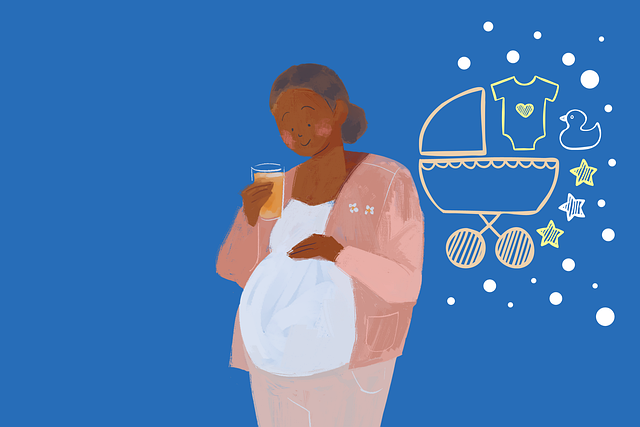As I sat cradling my newborn, an overwhelming wave of tears streamed down my flushed cheeks. The arrival of my daughter brought forth a whirlwind of emotions—fear, pain, vulnerability, relief, and joy, all colliding within me. I let the tears flow freely, unable to pull away from her tiny form nestled against my chest. The nurse had barely managed to place a soft pink cap on my daughter’s head before she began to instinctively root for nourishment, her lips puckering in a way I had only seen in breastfeeding videos.
Instinctively, I offered my breast, and she latched on immediately, suckling gently as her eyelids fluttered shut. In that moment, we both found solace in this new bond, a comforting ritual that connected us. As I traced the delicate contours of her face and limbs, my eyes drifted down to my own body, which bore the marks of my pregnancy. Those stretch marks were reminders of the physical challenges I had faced, and I reflected on the complications that had plagued my journey to motherhood.
Despite the struggles I endured during pregnancy, witnessing my daughter nurse effortlessly was a soothing revelation. For once, my body seemed to function as intended. I spent those early days watching her nurse until she drifted off into a peaceful sleep, her sweetness filling the air with a sense of calmness we affectionately referred to as “milk-drunk.”
As weeks turned into months, my once-cherubic newborn transformed into a colicky baby, often crying until her face turned crimson. While I longed to comfort her, I found myself battling a new adversary: postpartum anxiety. My mind, once my ally, now felt like a weight pressing down on me. After seeking help, I was relieved to find medication compatible with breastfeeding, which allowed me to embrace my role as a mother once again.
Through the chaos of motherhood, the sight of milk dribbling down her chin and the warmth of her breath brought me a sense of peace. It reminded me that I was enough, that my ability to nourish her was a profound expression of love. Even as I navigated the daily demands of parenting, the weight of motherhood felt heavy, yet I found comfort in our breastfeeding ritual.
As my daughter grew into a spirited toddler, she often called out “Nurse!” with glee before bedtime, twirling her sandy hair as I reminisced about her tiny hands at birth. The thought of weaning filled me with uncertainty. What would our relationship look like without this special bond? Would she still choose me over a favorite toy or blanket?
Sitting in our well-loved rocking chair, I caressed her cheek as she nursed. I reassured myself that I was more than just a source of milk; my love and support extended far beyond that. The darkness of postpartum anxiety couldn’t overshadow the light of my affection.
I watched as her eyelids began to droop, just as they had countless times before. Holding back tears, I felt her body relax in my arms, surrendering to the comfort of our final nursing session. It was a bittersweet moment, marking the end of an era for both of us, a poignant reminder of the depth of our bond.
For those navigating similar journeys, resources like Women’s Health can provide invaluable information on pregnancy and postpartum support. For families exploring options for conception, consider checking out this guide for at-home insemination kits. And for more insights on parenting and weaning, this article is a great resource.
In summary, the emotional journey of weaning can be complex and deeply felt. The last latch symbolizes not just the end of breastfeeding, but a transition in the mother-child relationship that is filled with love, memories, and new beginnings.
